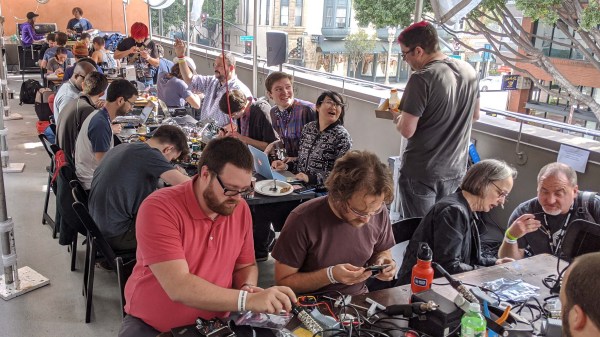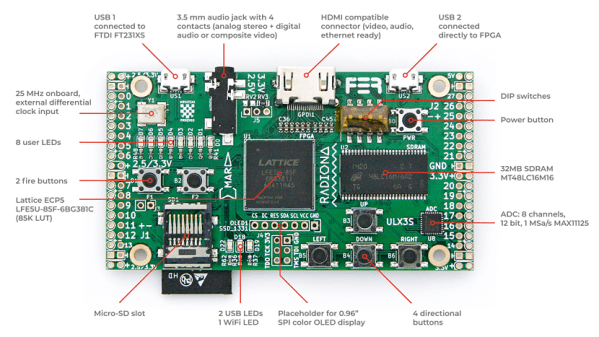The Rasberry Pi Zero is a delightful form factor, with its GIPO and USB and HDMI, but it’s stuck using the same old ARM processor all the time. What if you wanted to change it up with some OpenSPARC, RISC V, OpenPOWER, or even your own oddball homebrew ISA and processor? Well, fret not, for [Chengyin Yao]’s IcePi Zero has got you covered with its ECP5 25F FPGA.
As the saying goes, you don’t tell an FPGA what to do, you tell it what to be. And with the ECP5 25F’s 24k LUTs, you can tell it to be quite a few different things. This means more work for the maker than plugging in a fixed processor, sure, but IcePi tries to make that as painless as possible with quality-of-life features like HDMI out (something missing from many FPGA dev boards), an onboard USB-to-JTAG converter (so you can just plug it in, no programmer needed), and even USB-C instead of the Pi’s old microUSB. There’s the expected SD card on one end, and 256 MiB of 166 MHz SDRAM on the other to make up for the FPGA’s paltry 112 KiB of onboard RAM.
Plus it’s a drop-in replacement for the Pi Zero, so if you’ve already got a project that’s got one of those running an emulator, you can fab one of these babies, spool up some Verilog, and enjoy running on bare metal. It seems like this device is just made for retro gaming handhelds, but we’d love to hear in the comments if you have other ideas what to do with this board– remember that an FPGA can be (almost) anything, even a GPU!
Currently, [Chengin Yao] is not selling the board, though they may reconsider due to demand in their Reddit thread. If you want one, you’ll have to call your favourite fabricator or etch your own PCB.
We’ve seen FPGAs before; most recently to create an absurdly fast 8080 processor. We’ve also seen DIY dev boards, like this one for the AMD Zyntac FPGA. Doing something fun with FPGAs? Drop us a tip! We’re happy [Chengin Yao] did, because this is amazing work, especially considering they are only 16 years old. We cannot wait to find out what they get up to next.

















